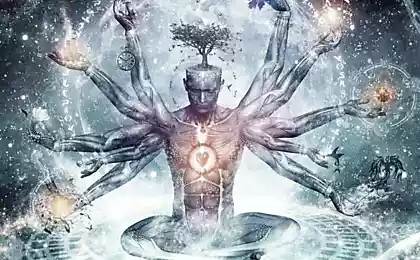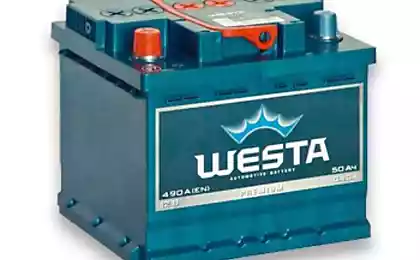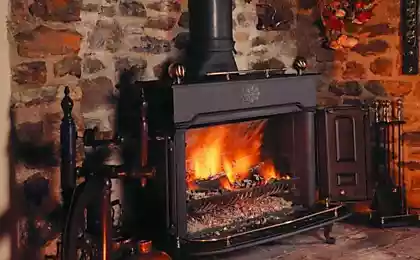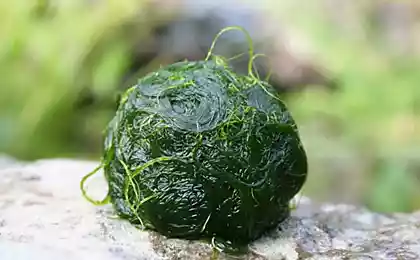390
At Gatchina may receive power plant running on underground heat
In the area of the geothermal anomaly on the border of St. Petersburg and Leningrad region may receive power, which will work on underground heat. The project of the so-called "perpetual motion" representatives of the regional government and environmental organizations discussed in the meeting of the Environmental Council of the Governor of the Leningrad region. Alternative energy relevant to the region: coal has a number of disadvantages, carrying gas is expensive because of the need to lay pipes in the forests, and the proposed for implementation in the Luga district the project is "Stomp" where the use of fuel derived from municipal waste, was recently rejected by the government of the Leningrad region. Thus, the search for a suitable source of energy continues. According to experts, saving could be geothermal.

A similar project is now in the Finnish city of Espoo. In two years there will be launched first in Finland, a geothermal power plant. Finnish experts expect to achieve at a depth of 7 km zone in which the rock temperature is 120 degrees Celsius. Scientists have proposed to use as coolant boiling freon-12, which has a boiling point at atmospheric pressure is minus 30 degrees. From the well water temperature of 80 degrees Celsius will give its heat to the freon, which will rotate the turbines and produce electricity. Interesting locations for the construction of this geothermal power plant is in Leningrad region. The sedimentary cover here is quite thin, only tens of meters, and then originate, as in Finland, the indigenous igneous rocks. The rock shield is heterogeneous: it is riddled with faults, some of which rises upward heat flux. The first on this phenomenon drew the attention of botanists, are found on the Karelian isthmus and on the Izhora plateau heat Islands where grow the plants either with a high rate of reproduction, either belonging to the more southern subzones Botanical. And at Gatchina and is discovered Botanical anomaly — plants of the Alpine-Carpathian flora. Plants exist because of the flow of heat coming from under the ground. On the results of drilling in the Pulkovo area at a depth of 1000 meters the temperature of crystalline rocks amounted to plus 30 degrees, that is, on average, it increased by 3 degrees every 100 meters. This is a "medium" level temperature gradient, but it is almost two times more than in the area of Espoo, in Finland. This means that in the Pulkovo enough to drill a well to a depth of only up to 3500 meters to get the same result and, accordingly, such a plant will cost much cheaper than in Espoo.In addition to geothermal power plants, to solve the problem of a heat supply of remote settlements can help small pressure and damless HPP.

According to environmentalists, is now used by a small proportion (~0.2%) of potential hydropower resources of small rivers of the region, at that time, as in the heyday of small hydropower (50-ies, 60-ies of the 20th century) in the region operated dozens of small HPPs, which are then in the conditions of continuous network electrification was decommissioned and abandoned. For latitudes in the region also there may be a limited use of solar energy for low-temperature processes, such as heating water to temperatures of ~80 degrees. using solar thermal collectors for hot water systems with seasonal cycle of use. When the family of 4 hot water volume of 200 l/day solar heating system with an area of 10 sq. m saves from 300 to 900 litres of fuel oil per year. Following the meeting it was decided to prepare a Memorandum to the government of the Leningrad region about the possibilities of using alternative sources of energy, which attract scientists and experts in these fields. published
P. S. And remember, only by changing their consumption — together we change the world! ©
Source: www.sberegai.com/2016/05/blog-post_6.html

A similar project is now in the Finnish city of Espoo. In two years there will be launched first in Finland, a geothermal power plant. Finnish experts expect to achieve at a depth of 7 km zone in which the rock temperature is 120 degrees Celsius. Scientists have proposed to use as coolant boiling freon-12, which has a boiling point at atmospheric pressure is minus 30 degrees. From the well water temperature of 80 degrees Celsius will give its heat to the freon, which will rotate the turbines and produce electricity. Interesting locations for the construction of this geothermal power plant is in Leningrad region. The sedimentary cover here is quite thin, only tens of meters, and then originate, as in Finland, the indigenous igneous rocks. The rock shield is heterogeneous: it is riddled with faults, some of which rises upward heat flux. The first on this phenomenon drew the attention of botanists, are found on the Karelian isthmus and on the Izhora plateau heat Islands where grow the plants either with a high rate of reproduction, either belonging to the more southern subzones Botanical. And at Gatchina and is discovered Botanical anomaly — plants of the Alpine-Carpathian flora. Plants exist because of the flow of heat coming from under the ground. On the results of drilling in the Pulkovo area at a depth of 1000 meters the temperature of crystalline rocks amounted to plus 30 degrees, that is, on average, it increased by 3 degrees every 100 meters. This is a "medium" level temperature gradient, but it is almost two times more than in the area of Espoo, in Finland. This means that in the Pulkovo enough to drill a well to a depth of only up to 3500 meters to get the same result and, accordingly, such a plant will cost much cheaper than in Espoo.In addition to geothermal power plants, to solve the problem of a heat supply of remote settlements can help small pressure and damless HPP.

According to environmentalists, is now used by a small proportion (~0.2%) of potential hydropower resources of small rivers of the region, at that time, as in the heyday of small hydropower (50-ies, 60-ies of the 20th century) in the region operated dozens of small HPPs, which are then in the conditions of continuous network electrification was decommissioned and abandoned. For latitudes in the region also there may be a limited use of solar energy for low-temperature processes, such as heating water to temperatures of ~80 degrees. using solar thermal collectors for hot water systems with seasonal cycle of use. When the family of 4 hot water volume of 200 l/day solar heating system with an area of 10 sq. m saves from 300 to 900 litres of fuel oil per year. Following the meeting it was decided to prepare a Memorandum to the government of the Leningrad region about the possibilities of using alternative sources of energy, which attract scientists and experts in these fields. published
P. S. And remember, only by changing their consumption — together we change the world! ©
Source: www.sberegai.com/2016/05/blog-post_6.html























